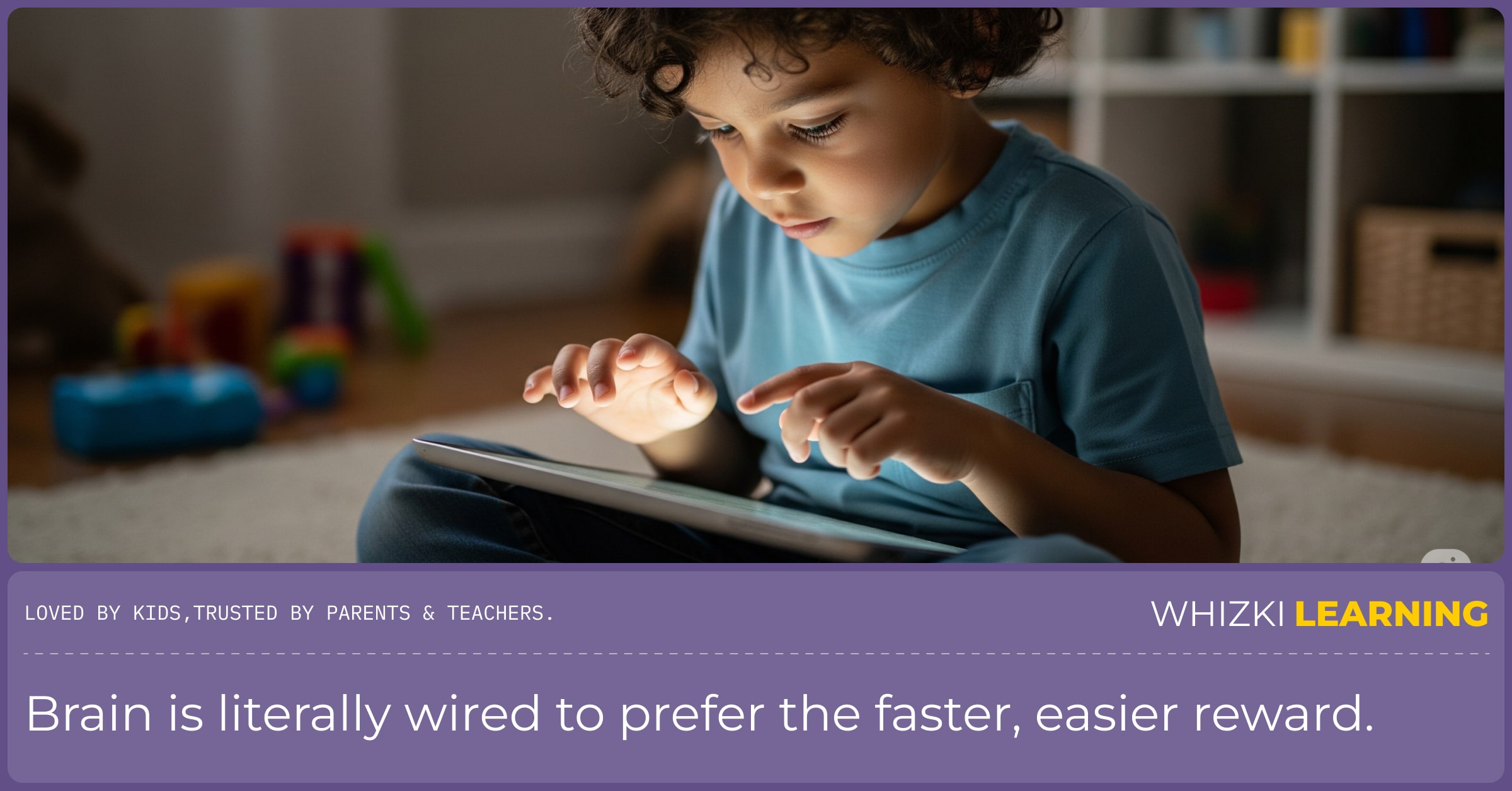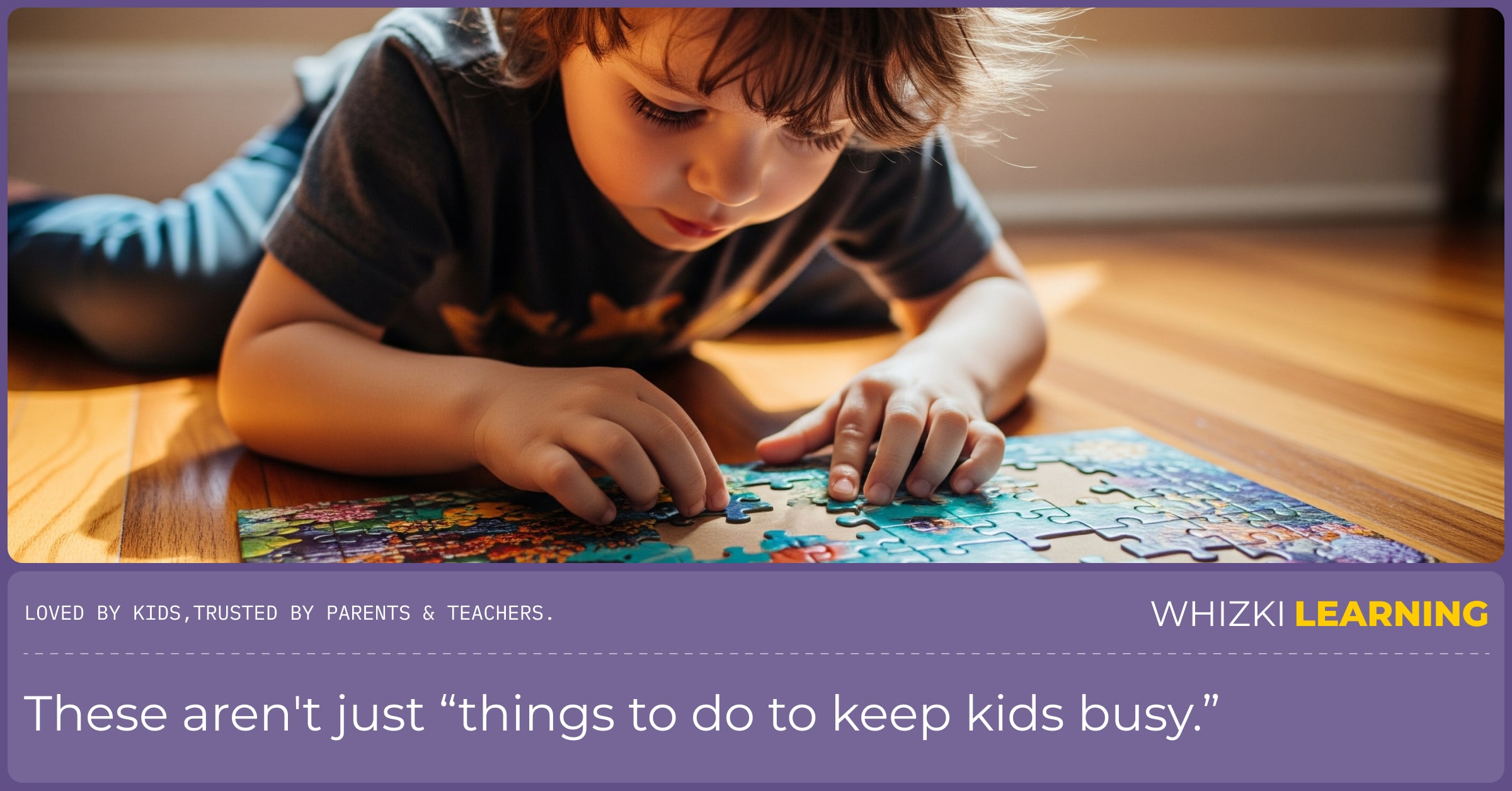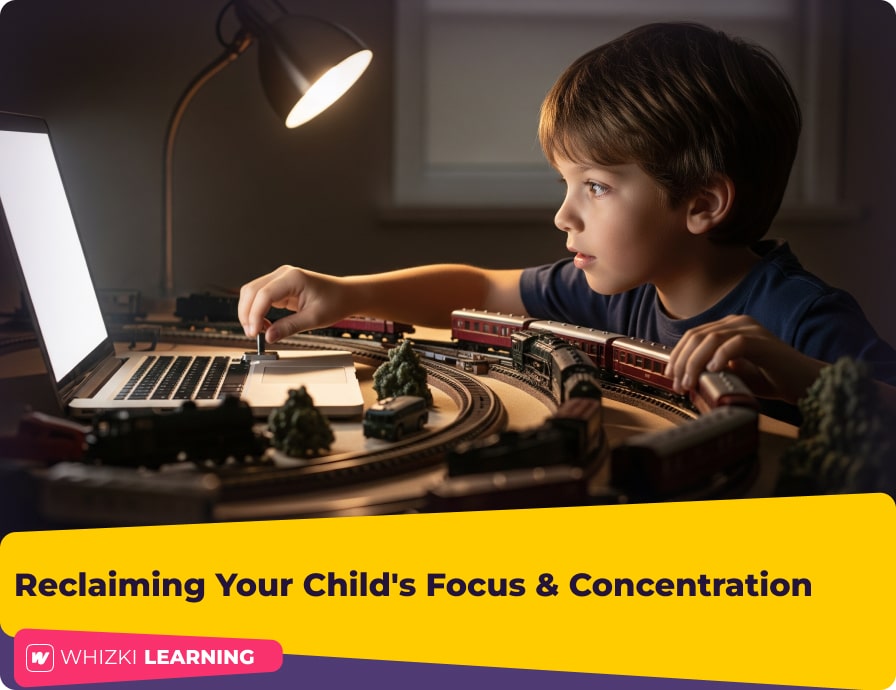Let’s paint a picture. It’s been a long day. You needed 20 minutes of peace to make dinner, so you handed over the tablet. No judgment-we’ve all been there. But now, dinner’s ready, and the tablet is off. And your child... they’re not really ‘back’ yet, are they? They have that glassy-eyed look, they’re irritable, and getting them to focus on a simple task like putting on their shoes feels like negotiating a complex international treaty. You're speaking, but it’s like your voice is just bouncing off a wall of digital fog.
This experience is so universal, it's practically a rite of passage for modern parents. We live in a world saturated with screens, and while they offer connection and entertainment, they are also fundamentally reshaping our children's ability to concentrate. The constant pings, rapid scene changes, and instant rewards of the digital world are training their brains for distraction.
"We're facing a silent epidemic of fractured attention. We're not raising naughty children; we're raising children whose brains are being conditioned for constant interruption. The skill of deep, single-task focus must now be taught as intentionally as we teach them to read."
- Dr. Amelia Thorne, Child Development Psychologist
But here is the profoundly hopeful truth: you have the power to change this. You can be the architect of your child’s attention span. This guide is your blueprint. It’s not about shaming or banning screens entirely. It’s a practical, empathetic, 'how-to' manual for intentionally cultivating the superpower of the 21st century in your child: the ability to unplug, be present, and focus deeply.
Chapter 1: The 'Why' Behind the Wire: Understanding Your Child's Brain on Screens
To solve a problem, we first have to understand it. Why exactly does a screen seem to hijack a child's brain? It's not magic; it's neuroscience, and it’s surprisingly simple.
Imagine your child’s brain has a 'reward' system run by a chemical called dopamine. It’s the 'ooh, that felt good!' chemical. When your child plays a fast-paced game or watches a quick-cut cartoon, their brain gets a steady, easy drip-drip-drip of dopamine. A new character appears (drip!). A bright color flashes (drip!). A level is completed (big drip!). It's easy and requires very little effort.
Now, compare that to an offline activity, like building a tower with blocks. It’s slow. It requires effort. It might fall over. The dopamine reward only comes at the very end, when the tower is complete. For a brain accustomed to the easy digital drip, the delayed gratification of the real world can feel... boring. It’s not that your child doesn’t *want* to focus on the blocks; it’s that their brain is literally wired to prefer the faster, easier reward.

The part of the brain responsible for managing impulses and sustaining attention is the prefrontal cortex. Think of it as the 'focus muscle.' When a child passively watches a screen, that muscle is relaxing. When they engage in an offline activity that requires them to think, plan, and persist-like a jigsaw puzzle or a puzzle and maze workbook-that muscle gets a powerful workout. Our goal is to create a 'fitness plan' for that muscle.
Chapter 2: The How-To of a Focus-Friendly Home
Before we even get to specific activities, we need to set the stage for success. A child's ability to focus is profoundly affected by their environment. You can’t expect deep concentration in the middle of a chaotic, noisy space. Here’s how to create a 'prepared environment' for the mind.
Step 1: Declutter the Visual Field
Every single toy, book, and object in a room is a piece of information that a child's brain has to process. A cluttered room is a room full of visual 'noise' that constantly competes for your child's attention. A calm space creates a calm mind.
"I used to feel like a failure because my son would dump out every single toy and then just flit between the piles, never settling on anything. A teacher friend suggested toy rotation. I packed away 75% of his toys and just left out a few in baskets on a low shelf. The transformation was breathtaking. For the first time, he played with one thing for 30 straight minutes."
- Sarah, mom of a 4-year-old
How to do it: You don't need a minimalist home. Just grab a few storage bins. Rotate toys weekly. When there are fewer choices, a child can choose more meaningfully and engage more deeply.
Step 2: Create 'Zones for Focus'
Designate small, specific areas for quiet activities. This doesn't require a big house. A 'reading nook' can simply be a comfy beanbag and a basket of books in a quiet corner of the living room. An 'art station' can be a small table with a caddy of crayons and paper. When a child enters this zone, their brain gets a signal: 'This is a place for quiet, focused work.'
Step 3: Establish Predictable Rhythms
A predictable daily rhythm is like a railroad track for a child’s day. It reduces anxiety and the mental load of figuring out 'what's next.' When a child knows that after lunch is 'quiet time' with books or puzzles, the transition into that focused activity becomes almost automatic. There's less friction and fewer power struggles.
Chapter 3: An 'Attention Stamina' Toolkit: How-To Activities that Build Focus Muscles
Alright, your environment is prepped. Now for the 'workout.' These aren't just 'things to do to keep kids busy.' These are targeted exercises for the brain, disguised as play.
1. How to Build Single-Point Focus (The Jigsaw Puzzle Effect)
The 'Why': These activities have a clear, singular goal. The child must direct all their mental energy toward this one endpoint, building the neural pathways for sustained concentration.
Examples:
• Jigsaw Puzzles: Start with a 12-piece puzzle and work your way up. The act of finding a piece, rotating it, and seeing if it fits is a perfect loop of problem-solving and focus.
• Intricate Building: LEGOs, Magna-Tiles, or any block system that requires careful construction.
• 'I Spy' Books: These require a child to scan a busy page for a specific object, training their visual discrimination and focus.
• The Workbook Connection: A maze in our logic puzzles for children workbooks is a perfect example. There is one start, one end, and one solution. The child must use sustained focus to find the path.

2. How to Boost Working Memory (The 'Memory Game' Effect)
The 'Why': Focus isn't just about paying attention; it's about *holding* that information in your mind to work with it. This is 'working memory,' and it's like the RAM on a computer. The more you have, the more complex tasks you can handle.
Examples:
• Classic Matching Games: Placing cards face down and trying to find pairs is a direct workout for visual working memory.
• Storytelling Chains: You start a story ('Once there was a green dog...'), and your child repeats it and adds the next part ('Once there was a green dog who wore a hat...').
• Following Multi-Step Directions: Instead of 'Put on your shoes,' try 'Please go to your room, get your blue dinosaur, and bring it to me.' This requires them to hold three pieces of information in their mind.
3. How to Develop Impulse Control (The 'Baking' Effect)
The 'Why': A huge part of focus is resisting the impulse to do something else. Activities with built-in waiting periods are brilliant for teaching patience and delaying gratification.
Examples:
• Baking or Cooking: The process is full of waiting. You have to wait for the ingredients to mix, wait for the item to bake, and-the hardest part-wait for it to cool before you can eat it.
• Gardening: This is the ultimate lesson in delayed gratification. You plant a seed and have to wait days or weeks for it to sprout.
• Board Games: The simple act of waiting for your turn is a powerful exercise in impulse control.
Chapter 4: The Role of Workbooks in Your Focus-Building Plan
In a world of chaotic options, a high-quality workbook offers something magical: a single, self-contained universe of focus. When you open to a page, you are presenting your child with a perfectly prepared environment for concentration.
"I give my kindergarteners 10 minutes of 'workbook time' after lunch. Not as homework, but as a calming, centering activity. You can feel the energy in the room shift. They go from being loud and wiggly to quiet and focused. It's like yoga for their brains. It re-centers them for an afternoon of learning."
- Mrs. Gable, Kindergarten Teacher, 22 years of experience
A Whizki workbook is designed to be a focus-building tool. The instructions are clear and visual. The activities, whether it's one of our reading comprehension exercises or a 'spot the difference' game, are designed to have a clear beginning and a satisfying end. Led by our playful hedgehog mascot, each page is an invitation to tune out the noise and tune into a single, rewarding task. Our strict 'no digital downloads, printed workbooks only' philosophy is a core part of this. We believe in providing a sanctuary from the very digital fog we're trying to clear.
Finding Your Family's 'Offline' Rhythm
Reclaiming your child's focus is not another chore to add to your list. It's an invitation to slow down, connect, and engage with your child on a deeper level. It's about choosing connection over distraction. It won’t happen overnight. It starts with one puzzle. One board game. One walk outside without a device in hand. One quiet moment together with a workbook.
You are the guardian of your child's attention. By intentionally cultivating these offline skills, you are giving them a foundational gift that will serve them for the rest of their academic and personal lives. You are teaching them how to find the magic in the real world. And that is a superpower worth building.






